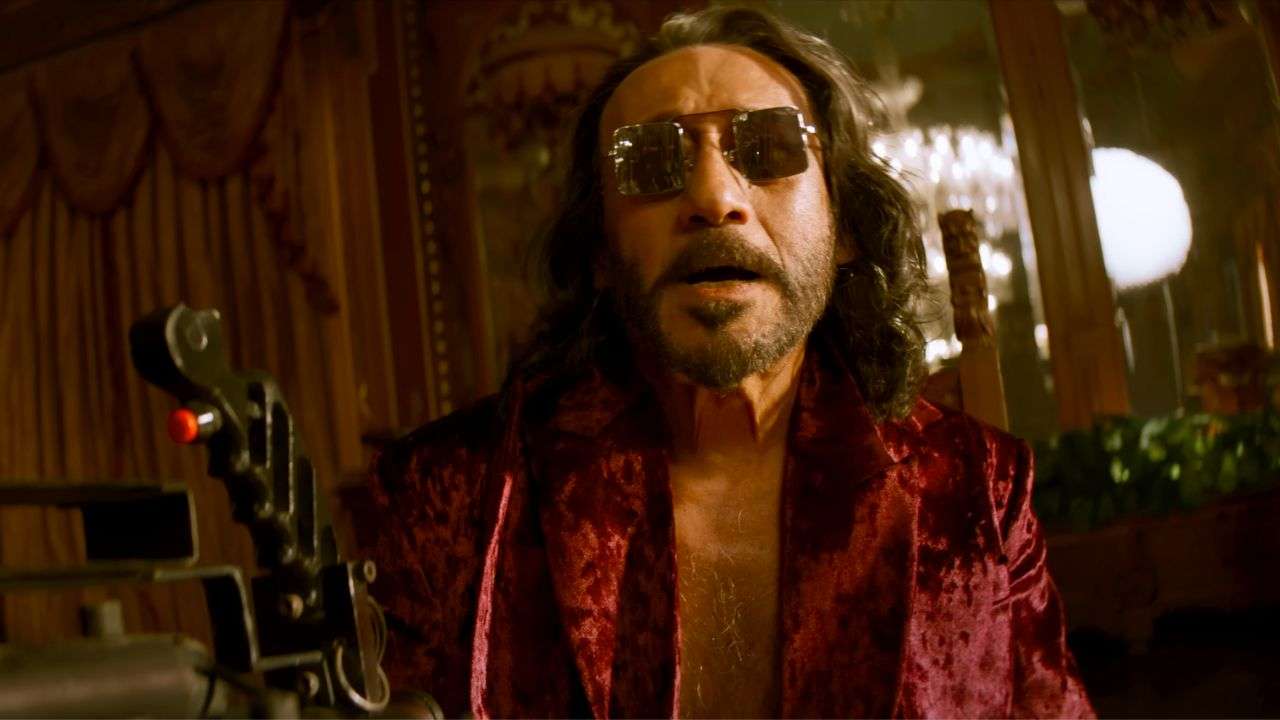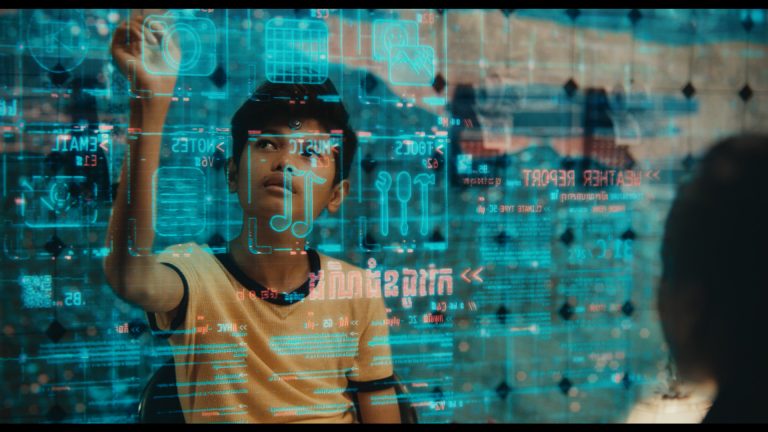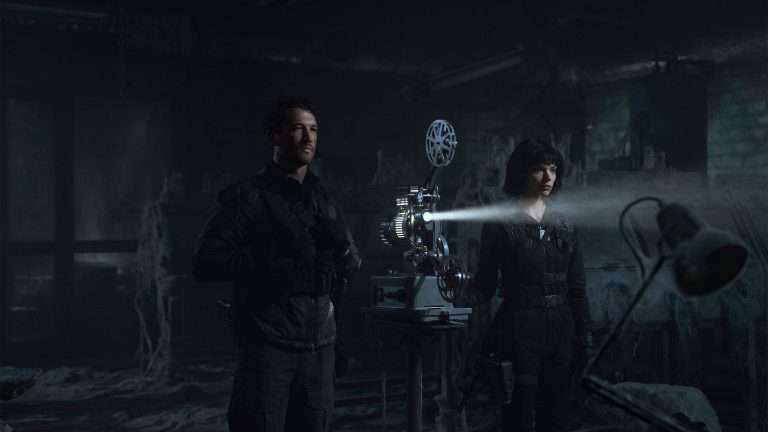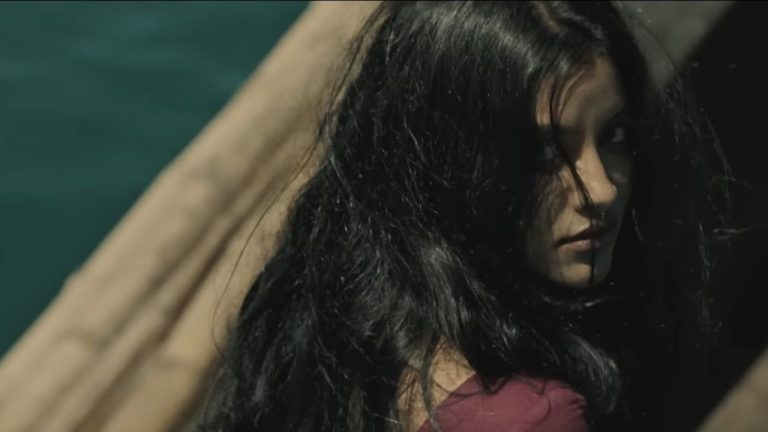While filmmakers around the world, especially in Hollywood, raise concerns about the growing use of AI in cinema, here comes a new Tamil film that not only leverages it but plants easter eggs for referencing Hollywood stars and movies. Directed by Adhik Ravichandran, “Good Bad Ugly” (2025) stars Ajith Kumar, commonly known as AK, who plays a reformed gangster. AK also goes by another name in the film, Red Dragon.
AK turns himself in to the prison after his wife refuses to even touch their newborn son, disillusioned by his criminal life. He promises to abandon crime and serves over 17 years in prison. His son grows up believing his father is always away on business trips, never knowing the truth. On the boy’s 18th birthday, AK is finally released—and just as he prepares to reunite with his son, the boy is arrested in Spain on charges of drug use and possession. What follows is a father trying to rescue his son while facing demons new and old.
Had this premise been executed with genuine cinematic intent, it might have made for a decent emotional thriller. But instead, the film drowns itself in a sea of easter eggs and tiring pointless references, losing its plot totally. The story that could have had emotional resonance is quickly buried under hollow gimmicks and throwbacks. Within minutes, it becomes exhausting to sit through for a general audience. This film doesn’t aim to connect with people, doesn’t care to push boundaries, challenge the intellect, or offer reflections on life—the reasons many of us turn to cinema in the first place. It fails to entertain or enlighten. Instead, it caters to a narrow slice of fandom, relying heavily on nostalgia, throwbacks, and nods to earlier Ajith films—forgetting that cinema isn’t just about referencing itself.
The cast includes familiar and capable names like Trisha Krishnan, Sunil Varma, Prabhu, and Jackie Shroff, but apart from Ajith, it’s Arjun Das, who plays the dual antagonist roles Jonny and Jammy, that gets more screen time and, some level of clarity in the character but just for a while. Again, it’s a direct nod to Ajith’s own dual roles in earlier films, which might please a few fans but adds little value to the narrative. The technical aspects are standard, bordering on forgettable. The forgettable music and score add nothing to the flow, and there are no standout visual elements. The editing, too, lacks rhythm, making the film feel much longer than it is.
-
A still from “Good Bad Ugly” (2025).
Though the narrative feels long, it also caters to the fans as if they are scrolling through their social media feed. Those internet reels and meme posts we scroll through have little to do with one another. One would be about friendship, one post would be about photography, and so on, which makes the user glue themselves to it for a longer duration. The writing of this film feels the same way; the whole runtime is more of an internet mashup videos or a reel—how the people call it a “brain-rot” these days.
What’s most jarring is that “Good Bad Ugly” doesn’t even try to hide its intentions. Many film productions, across industries, openly state their commercial goals. That’s fair. Cinema is business, too. But the best of them still aim to create experiences—stories that challenge, uplift, or stay with us. Art and commerce can coexist. Filmmakers enjoy fame and high pay not for the “product” they create but for the art—for making people feel, think, enjoy, and connect. Even when the goal is pure entertainment, some creators craft fresh, intelligent content to make people laugh—not just by dropping familiar references.
Here, Adhik isn’t necessarily chasing fame or fortune alone—he clearly wants to impress like other filmmakers, but it’s a very specific group he’s after: Ajith fans. And in that, he succeeds. He delivers exactly what that segment wants—references, call-backs, punchlines, and mass moments that exist more for cheers than story. But for a wider audience, especially those who don’t have much emotional investment in Ajith’s filmography, this movie doesn’t just disappoint—it frustrates. Some might even walk out before the interval.
Even films that focus heavily on stunts and style still anchor themselves with compelling characters, risks, and storytelling. With Tom Cruise in the “Mission: Impossible” franchise—yes, the stunts are wild and iconic, and the franchise is best known for it. But the emotional stakes are always clear. He’s not just running to run; he’s chasing something that matters. The practicality of his stunts, the sincerity in execution, and the evolving narrative have earned him global respect—not just fanfare. And even within franchises, it’s the originality and execution that elevate them—reviews and audience ratings only keep climbing when the work truly connects.
If Indian stars want to reach that level of respect, they must let creators build something new, something bold. Referencing old films to crack a joke or earn a cheer in the theatres isn’t storytelling—it’s lazy writing. It might entertain a handful at the moment, but it does nothing for cinema in the long run. In the end, “Good Bad Ugly” isn’t about what it sets out to be. The film is not about redemption or fatherhood. It’s not even about Ajith’s character. It’s a stitched-together love letter to fan service, wrapped in tech gimmicks and nostalgia, missing a soul. For a film that had a genuinely interesting premise, it is a real tragedy.








![A Spike Lee Joint: Bamboozled [2000]](https://79468c92.delivery.rocketcdn.me/wp-content/uploads/2018/11/sleepneat-768x438.jpg)

![Possessor [2020]: ‘BFI-LFF’ Review – A fine future addition to the realm of cult cinema](https://79468c92.delivery.rocketcdn.me/wp-content/uploads/2020/10/Possesor-1-highonfilms-768x432.jpg)